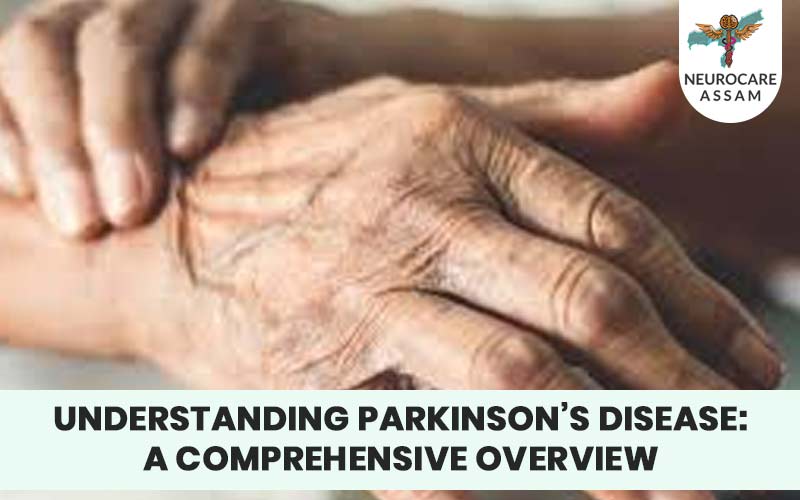
Understanding Parkinson’s Disease: A Comprehensive Overview
Parkinson’s disease (PD) is a progressive
neurodegenerative disorder that primarily affects movement. The disease is
characterized by the generation of dopamine-producing neurons present in a
specific area of the brain called the substantia nigra. Dopamine is a vital
neurotransmitter that helps in transmitting signals in the brain to coordinate
movement.
If these neurons deteriorate, the dopamine
level decreases, leading to the motor symptoms commonly associated with the
disease.
Symptoms
of Parkinson’s disease:
A combination of motor and non-motor symptoms
marks Parkinson's disease. The motor symptoms include tremors, bradykinesia
(slowness of movement), rigidity, and postural instability.
The non-motor symptoms are cognitive changes,
mood disorders, sleep disturbances, and autonomic dysfunctions.
Motor
Symptoms:
Tremor:
One of the first noticeable symptoms of Parkinson’s
disease, tremor starts in one hand or arm and can spread to other parts of the
body.
Bradykinesia
(Slowness of movement): The signs are marked as
slowness in voluntary movement, and this is a significant cause of disability
in Parkinson’s disease. Patients may have difficulty initiating movement and
may exhibit a reduction in spontaneous movements, such as arm swinging while
walking.
Rigidity: Muscle stiffness is another core symptom, affecting the limbs and
trunk. It can cause discomfort and limit the range of motion.
Postural
Instability: This symptom often develops in the later
stages of Parkinson’s disease and contributes to a higher risk of falls. It
involves problems with balance and coordination.
Non-Motor
Symptoms:
Patients with Parkinson’s disease experience
cognitive decline, which can progress to dementia in the later stages. This
affects memory, executive functions, and the ability to plan and execute tasks.
Mood
Disorders: Depression and anxiety are common in
Parkinson’s disease, significantly impacting the quality of life. These
symptoms may result from both the neurochemical changes in the brain and the
psychological burden of living with a chronic illness.
Sleep
Disorders: Insomnia, excessive daytime sleepiness, and
REM sleep behavior disorder (acting out dreams) are prevalent among PD
patients.
Autonomic
Dysfunction: This can include a variety of symptoms
such as constipation, orthostatic hypotension (a drop in blood pressure when
standing up), and urinary problems.
Stages
of Parkinson’s Disease:
There
are five stages in Parkinson’s disease:
●
In stage 1, patients can have mild
symptoms that typically only affect one side of the body. They might experience
minor tremors and slight changes in posture, walking, and facial expressions.
●
In stage 2, patients start to
experience effects on both sides of the body, although balance remains intact.
There is a noticeable slowing of movements and increased muscle stiffness.
●
In stage 3, balance is now
compromised, leading to a higher risk of falls. Patients are still fully
independent in their daily living activities but experience significant
movement difficulties.
●
At stage 4, symptoms are severe
and disabling. While patients can still walk and stand unassisted, they require
substantial help with daily activities.
●
In the last stage, patients are
typically bedridden or use a wheelchair. They need around-the-clock care for
all activities.
Causes
of Parkinson’s disease:
The exact cause of this disease is unknown,
but it is believed to be due to a combination of genetic and environmental
factors. Several genes have been linked to familial forms of the disease, and
exposure to certain toxins and heavy metals has been implicated in its
development.
Treatment
of Parkinson’s disease:
Presently, there is no specific test to
diagnose Parkinson’s disease. It is primarily based on medical history and
neurological examination. One technique used to diagnose Parkinson’s is
DaTscan, which shows the diagnosis by showing reduced dopamine transporter
levels.
With proper consultation, medications for Parkinson’s disease help tackle the symptoms. Another way to diagnose is surgical treatment, which involves implanting electrodes in specific areas of the brain. It can significantly reduce motor symptoms in patients who do not respond well to medication. Exercise and physical therapy are vital components of managing Parkinson’s Disease. They help maintain mobility, improve balance, and reduce stiffness.
Summary:
Parkinson's disease is a complex and multifaceted condition that impacts millions of lives worldwide. Understanding its symptoms, progression, and management strategies is essential for patients, caregivers, and healthcare providers.



.jpg)

